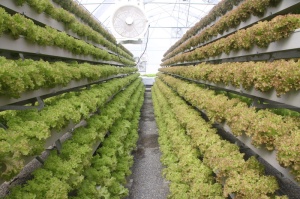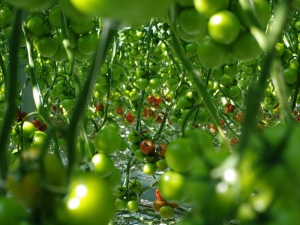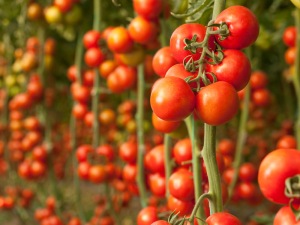It is a non-circulatory method for hydroponics investment.
This method can be implemented using simple pumps thus advisable for
developing countries. With dynamic root floating technique, the pump is
not continuously in use but is only switched on and off when needed. At
the bottom part, it is the roots dangle in the nutrient solution and
specialized nutrient and the upper part is in oxygen place. The system
is fitted with DRFT which keeps the temperature of the solution
constant.
Thursday, 24 December 2015
Wednesday, 16 December 2015
Emerging Trends in Hydroponics and Global Market Forecasts

The population of people living in cities and towns has increased without producing their own food, leading to high dependence on processed products. Also the dominant food paradigm is breaking down due to climate change, increasing droughts, soil depletion and disease, phosphorus scarcity among others factors. With this in mind, consumers and retailers numbers are increasing while the availability of high quality foods which are affordable is becoming less. How are you going to solve this problem of food shortage? Hydroponics is one of the practices to consider to invest in. Hydroponics is a farming method that can help feed cities of future while all the customer demands are met. Hydroponics ensure health of the ecological systems, so it is gaining grounds in the world.
People who are looking to invest in hydroponics food production, there are many aspects that one has to consider to run the business effectively. You have to understand the trends that are affecting agriculture and food security, making hydroponics a viable way to achieve better production methods. While you are looking to invest in the market, you have to identify strategies and tools for risk mitigation and a sustainable, profitable path forward in hydroponics.
 What are the barriers for one investing in hydroponics?
What are the barriers for one investing in hydroponics?
There are several risks, challenges and barriers affecting hydroponics operations. Some of the challenges include cost, operational complexity, energy and qualified labor. Hydroponics investment becomes expensive when you are starting up and operating as compared to soil based farming. This has become a real challenge.
With few people in hydroponics investment business, getting qualified persons remains a challenge. Fewer young people are getting into agriculture in any world region, leading to low workforce. Hence, a challenge for hydroponic farmers.
Market growth is also one of the barriers in hydroponics investment. Agriculture is a very conservative sector with many obstacles to overcome to change and an inertia where traditional methods have persisted.
If authorities are going to put in the right measure, hydroponic farming can lead to world’s food security. People should be educated about how to go about these methods of food production which requires little space. As some people are taking this farming method seriously, there is a tremendous growth in the field.
If you are looking forward to try out hydroponics investment, it is the best idea. There are some countries which have advanced in hydroponics. Hydroponics in India has gone to the next level for example because people are understanding the importance of this food production method.

Tuesday, 8 December 2015
Best Hydroponic Investment Methods in World
 Food shortage has remained one of the main challenge in the current world. Old soil crop production methods have become less productive with depletion of natural nutrients. With emerging trends, people must start to produce more food as population is increasing rapidly, arable land is decreasing, and traditional farming methods are soon coming to an end, giving hydroponic farming method a breakthrough.
Food shortage has remained one of the main challenge in the current world. Old soil crop production methods have become less productive with depletion of natural nutrients. With emerging trends, people must start to produce more food as population is increasing rapidly, arable land is decreasing, and traditional farming methods are soon coming to an end, giving hydroponic farming method a breakthrough.
Investing in hydroponics has proved to be economical and effective compared with other traditional farming method. Considering there is no space limit for this method of crop production and less water required, everybody should start thinking about investing on hydroponics. Hydroponics is has a quicker growth scale and more nutritious in comparison to traditional farming methods. If you are looking to investing in hydroponics, here are the main types of hydroponic techniques which have been tested.

Nutrient film technique
This method work best with plants that have a long root system. With this circulatory system, it involves plants channel that allows the nutrients water to be continuously pumped in the channel. Plants are simply suspended above the solution with their long roots dangling into the solution. When you opt for this hydroponic technique you must constantly maintain the overgrown roots which can block and disrupt the whole process. You also have to make sure that there is constant flow of nutrients solution or else the plant will dry out so the pumps must be very effective to achieve good results.
Dynamic root floating hydroponics technique
It is a non-circulatory method for Hydroponics investment. This method can be implemented using simple pumps thus advisable for developing countries. With dynamic root floating technique, the pump is not continuously in use but is only switched on and off when needed. At the bottom part, it is the roots dangle in the nutrient solution and specialized nutrient and the upper part is in oxygen place. The system is fitted with DRFT which keeps the temperature of the solution constant.
Water culture hydroponics technique
In this technique, roots dangle freely in solution. Since there is a problem of root aeration often, a pump is used to supply oxygen. In this method, roots are exposed to light to give rise to nutrients consuming algae. This hydroponics technique is ideal for plants that grow fast.
With these hydroponic production techniques, you can choose a suitable method which is favor your needs. Though sometimes advanced hydroponic system can be intensive and expensive.
Tuesday, 24 November 2015
Why Investing In Hydroponics Farming System A Good Idea
 As a subset of hydroculture, hydroponics is a method of growing plants using minerals nutrients solutions in water without involving soil. In this method terrestrial plants are grown with their roots in the mineral nutrient only or just in an inert medium, mostly gravel or perlite. Hydroponics investment is emerging as a solution to food shortage in different countries. The question is, is investing in hydroponics farming a good idea?
As a subset of hydroculture, hydroponics is a method of growing plants using minerals nutrients solutions in water without involving soil. In this method terrestrial plants are grown with their roots in the mineral nutrient only or just in an inert medium, mostly gravel or perlite. Hydroponics investment is emerging as a solution to food shortage in different countries. The question is, is investing in hydroponics farming a good idea?
The answer to this question without doubt is positive. Considering that hydroponic investment can be implemented in places where the soil type is not ideal for desired crop, it is the best farming method to enhance food security in the world. Also this method does require you to have large parcel of land to practice, even those living in urban areas can practice hydroponics in roof top. Investing in hydroponics thus remains a better option for extra income and also better health food.
For those who have tried this method of crop production, they have experienced higher and stable yields because the plants does not expend too much energy in finding nutrients in the soil thus this energy is reinvested into the growth of the crops. In soil farming, plants normally compete with weed for nutrients and water but in hydroponics the adequate nutrients are delivered straight from the plants’ roots.
Hydroponics has resulted to be the best investment with high returns considering there is less frequent occurrence of diseases because of the absence of soil which is a bacteria media. Hydroponic farming doesn’t require to transport your produce long distances after harvesting considering that crops are grown near the area of use thus reducing transport cost.
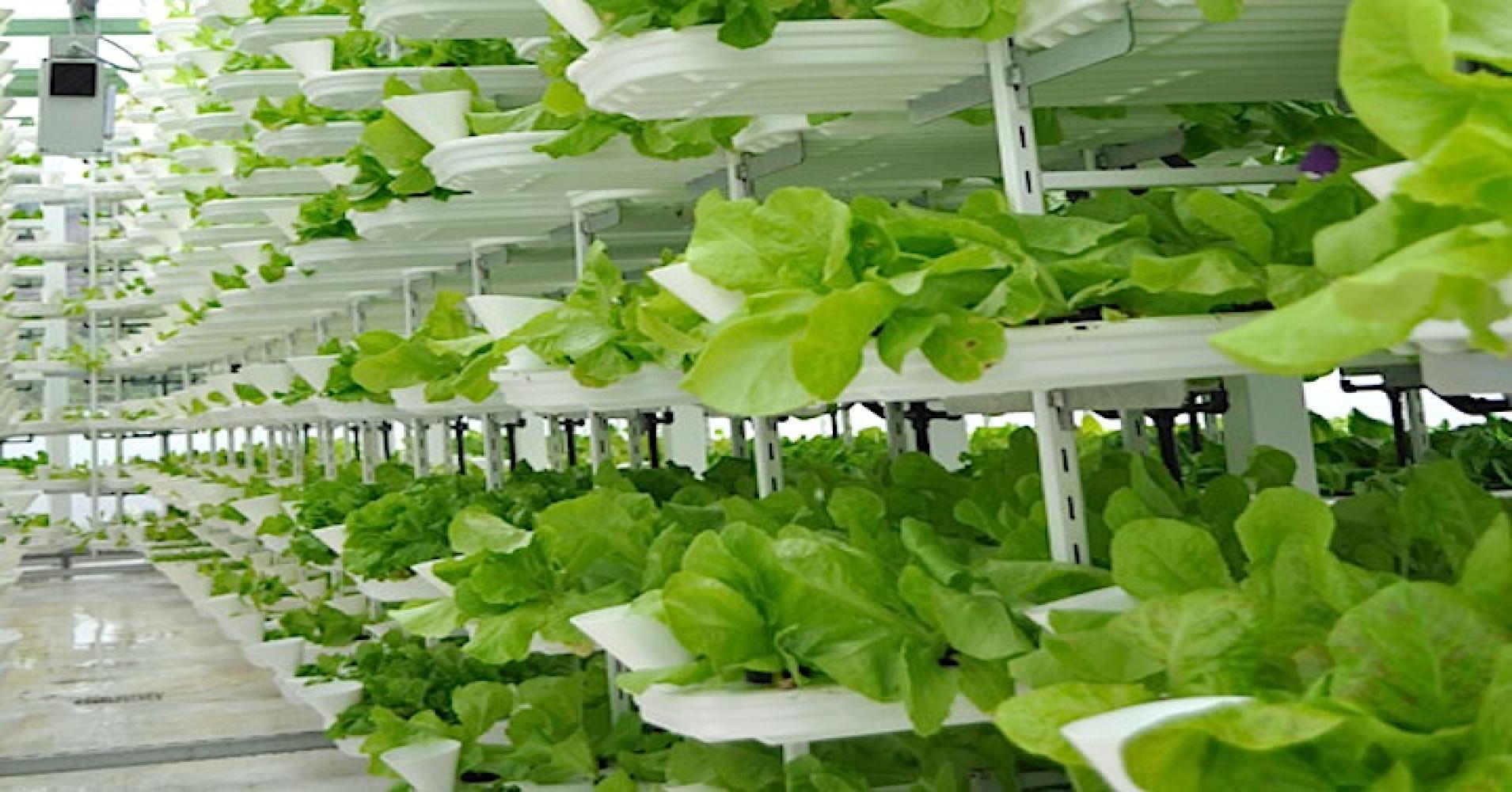
In hydroponics investment there is no labor intensive work such as tilling, fumigating, cultivating, and watering of the plants, once you plant the crops you just wait for harvesting. With current developed automated and computerized hydroponic systems, you can control the process from your office thus reducing the cost drastically.
If you are looking forward to investing in hydroponics, the technique is easy to understand and does not require any prior knowledge to achieve best results. If you are equipped with all the required components for this noble food production idea, then get into business. It stand out as the best method to give the world food security. You can try hydroponics investment today and you will never regret.
Sunday, 22 November 2015
Advantages of Investing in Hydroponics
Hydroponics has continued to be an attractive form of farming. It is mainly because of the numerous advantages that are associated with it. In general, hydroponics refers to the form of farming that does not make use of the soil. For more information visit at www.agratechfarms.com
Monday, 26 October 2015
What is Hydroponics?
Hydroponics is the form of farming that does not require the use of the soil. In this form of farming, only a water solution is required to accommodate the seeds. Sometimes the roots of the growing plants are suspended in a solvent or a growing medium, while others involve roots growing directly in water. Both methods are quite successful in as far as producing huge yields is concerned. They have become quite popular today and currently attract farmers from all walks of life and from all corners of the earth. Before you can decide whether this form of farming is reliable or not, you can do well to know more information about it. Here are some important highlights about hydroponics that can enable you to know more about it in full.
First of all, it is vital to bear in mind the fact that there are countless methods of hydroponic farming that are recognised today. However, only one method is well known. The most recognised form of hydroponic farming is the use of a technique only referred to as the nutrient film technique. In this technique, water is the main medium for the growth of the plant. The roots are suspended directly in water. There is no growing medium which is added in this technique. The water is only medium for the growth of the plant. Today, a good number of agratech farms are known to be using this form of hydroponic farming.
There are certain cases where a growing medium other than water is used. The two methods both lead to the production of high yields. This explains why they are both used extensively. There are numerous examples of mediums that are used. Common examples include perlite, rockwool and coconut fibre. These are some of the major growing media that are used in commercial hydroponic farming. The growing medium is inert and therefore has no effect on the growth of the plant. It is just the medium that provides a suitable environment for the growth of the plant. The nutrients are provided by water. When you
In hydroponic farming, what really matters is the amount of nutrients that are being supplied at a time. Therefore, this is a critical issue. Although this is also a key issue in soil farming, it is actually more pronounced in hydroponic farming where the soil plays no role in the supply of nutrients. In general, there has to be a balance between the micro and macro nutrients. The macro nutrients are the nutrients which are supplied in large quantities. These include nitrogen, phosphorous, oxygen, carbon and potassium. On the other hand, the micro nutrients are the nutrients which are required in minute amounts. In hydroponic farming, both nutrients must be available in their required amounts to make sure that the plant grows properly. Despite being required in minute amounts, the micro nutrients are just as important as the macro nutrients. The other issue that has to be addressed at all times is the PH of the growing medium. This can also have a huge bearing on the growth of the plants.
Saturday, 17 October 2015
Does The Future of Hydroponics Look Bright?
Hydroponics has continued to be a popular form of agriculture. This is mainly because of the number of advantages that are associated with it. For example, it is said to be a quicker way to grow plants compared to the use of the soil. You can get your desired yield within a shorter period of time compared the time you would require to get the same yield from a soil farm. On the other hand, you do not need a large piece of land to be in a position to produce huge yields. These are some of the few advantages that are associated with this form of farming and they account for recent increase in the number of people who wish to go for it. Perhaps you wish to invest in hydroponics and you are wondering whether its future is bright or not, consider the following information.
When you are farming on the soil, you will need to be in possession of agricultural machinery. This is one of the major reasons why farming on soil may become outwitted by hydroponic farming in the near future. Agricultural machinery is very expensive and often requires workers who have undergone extensive training. Therefore, you may need to have a lot of money to be in a position to venture into commercial soil farming. The converse is true when it comes to hydroponic farming. You do not need to have a highly mechanised farm to be in a position to venture into hydroponic farming. Therefore, the idea to invest in hydroponics is actually be a good one. This actually explains why the future of hydroponics looks brighter than it used to be a few year back. There is little doubt about an expected increase in the number of farmers who may become interestd in venturing into this form of farming.
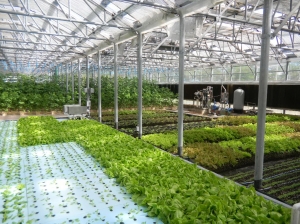 Those who criticise soli farming say that the soil is more prone to contamination compared to a medium of growth such as rockwool. Based on this, they recommend the use of a growing medium for the growth of crops instead of relying on the soil. This is a rational argument and actually accounts for some of the major reasons why a good number of farmers would rather venture into hydroponic farming than rely on soil farming. It is among the alternative investments that are available today and it is slowly replacing farming soil. This reason may also be enough to justify claims of a brighter future in hydroponics.
Those who criticise soli farming say that the soil is more prone to contamination compared to a medium of growth such as rockwool. Based on this, they recommend the use of a growing medium for the growth of crops instead of relying on the soil. This is a rational argument and actually accounts for some of the major reasons why a good number of farmers would rather venture into hydroponic farming than rely on soil farming. It is among the alternative investments that are available today and it is slowly replacing farming soil. This reason may also be enough to justify claims of a brighter future in hydroponics.
But hydroponics is a very technical form of farming. It differs greatly from soil farming in a good number of ways. In order to be in a position to successfully grow crops using a water solution or any reliable growing medium, you may need to have huge capital. Despite the many advantages that are associated with it, it may not replace soil farming so soon. In most parts of the world, small scale farmers are still relying on the soil as the main medium for farming. Generally, the future of hydroponics is bright despite this pitfall it is associated with.
Tuesday, 13 October 2015
The Advantages of Investing in Hydroponics
Hydroponics has continued to be an attractive form of farming. It is mainly because of the numerous advantages that are associated with it. In general, hydroponics refers to the form of farming that does not make use of the soil. The water usually acts as the main medium of growth in most cases. However, there are certain cases when other media of growth are used. For example, media such as rockwool may be used instead of having water alone. Nonetheless, both forms are used extensively and they are associated with a great measure of success. Today, a good number of farmers across the globe are resorting to this form of farming. Many commercial farmers in the developed world are switching to this form of farming. It is clear that the future of the farming industry lies in the hands of hydroponics. This can be attributed to the numerous advantages that are associated with it. Some of the major pros that are associated with hydroponics are highlighted in the passage.
Today, the number of hydroponic investments has increased owing to the fact that it is a quicker way to produce food on a large scale. This is one of the major reasons why this form of farming has continued to replace soil farming at a pace that no one even imagined. In comparison to soil farming, hydroponics can enable farmers to grow food within a few weeks compared to the many months of waiting that are associated with soil farming. For example, issues such as ploughing and weeding can easily be avoided in hydroponics. On the other hand, it is also associated with a shorter waiting time because crops get nutrients directly without the involvement of the soil.
Compared to soil farming which requires the use of agricultural machinery such as planters and harvesters, this form of farming does not. The crops are grown in a medium such as water or a combination of water a culture solution. Therefore, there is no need to use machinery for planting and harvesting. Even if the need for machinery may arise, it is not as complex and as bulky as the one used in soil farming.
The growing medium is usually inert. This means that its chemical properties do not affect the growth of the plant. The roots and the plant as a whole are not affected by the medium of growth. This differs from soil farming where the soil possesses its own chemical properties which have the capacity to affect the overall growth of the plants. The soil can affect the ph and nutrient uptake of the crops.
Another notable advantage that is associated with hydroponics is the fact that the ph of the growing medium can easily tested and adjusted as often as the need arises and the quick results are realised within minutes. This is not the case in soil farming where a change may be observed after several days. On the other hand, hydroponics eliminates the chances of leaching because the nutrients are accessed directly from the medium of growth.
Subscribe to:
Posts (Atom)


